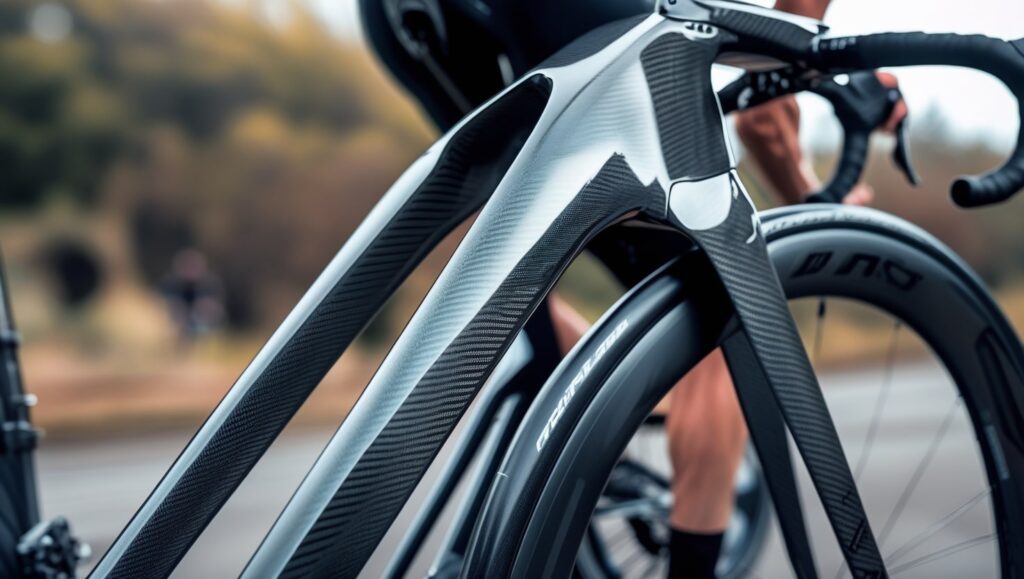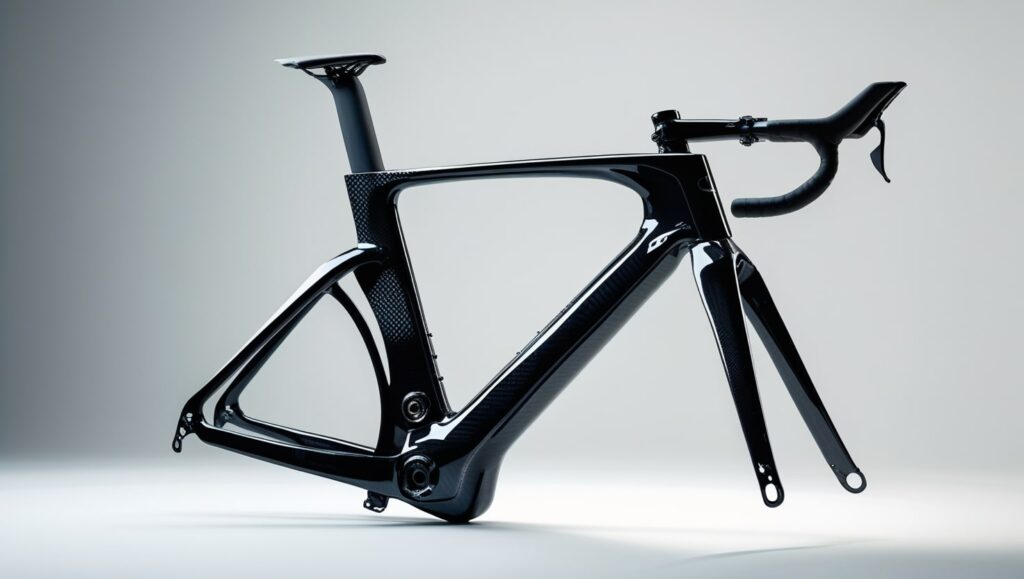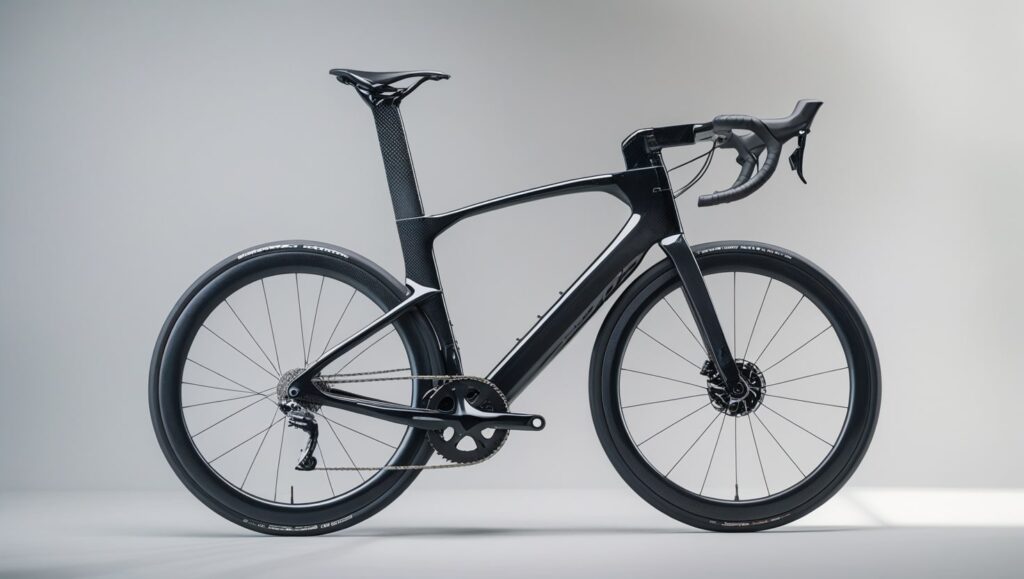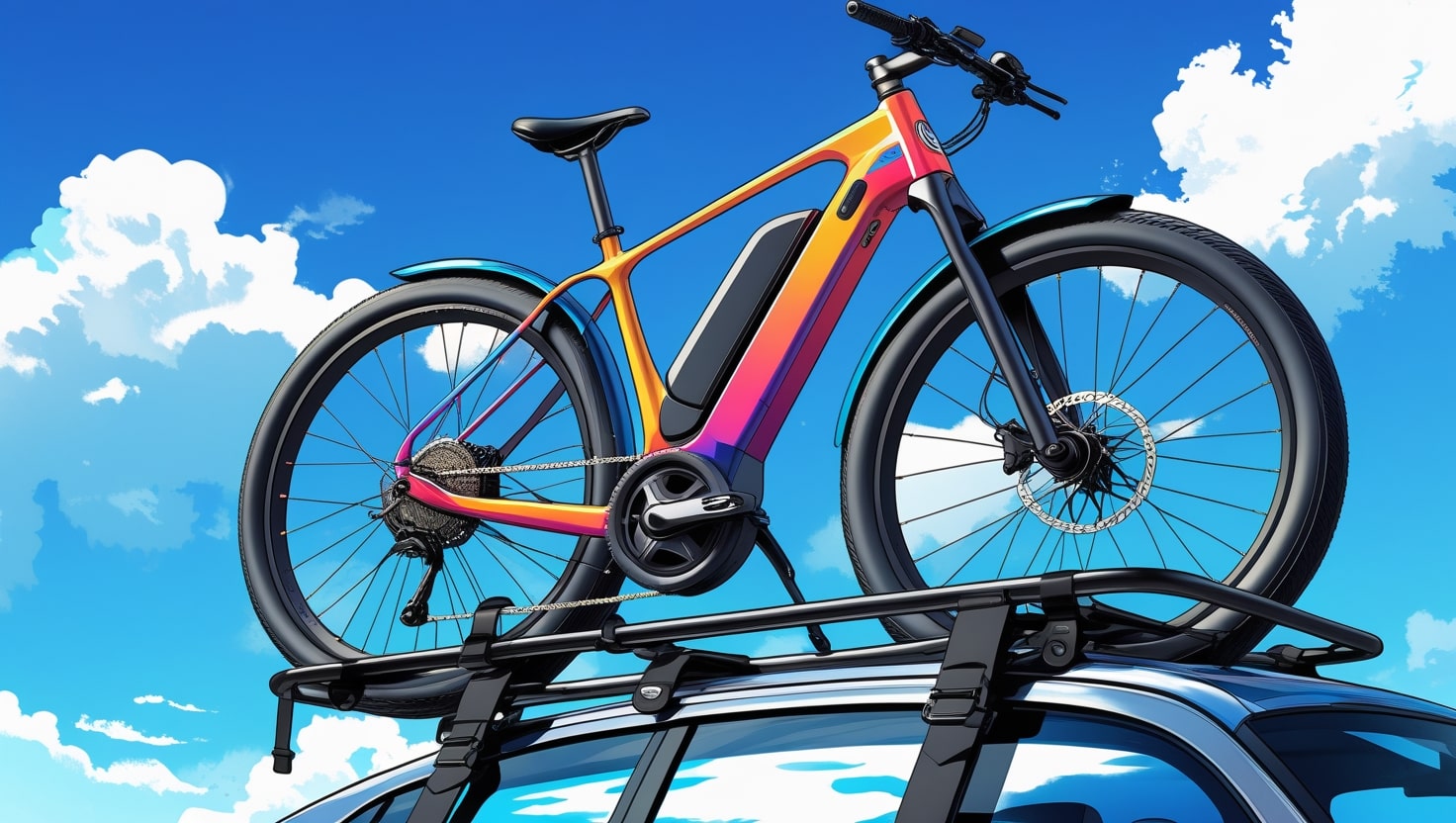As someone who’s ridden across city streets and rugged trails for years, I’ve often been asked the question: “How long do carbon fiber bike frames last?” It’s one I love to explore, especially since carbon has truly revolutionized the cycling world. When I switched from aluminum to a carbon bike, the difference in performance, lightweight handling, and vibration absorption was immediately clear. Cyclists often seek benefits like versatility, responsiveness, and a smoother ride—qualities that carbon fiber frames deliver in spades.
These unique traits make them a top choice in today’s market, especially with the rise of eBikes. Whether you’re riding competitively or casually, a carbon frame can offer both strength and lasting reliability when cared for properly. In this article, we’ll compare materials, discuss longevity, and break down why carbon is the pinnacle of bike frame tech for riders looking for the ultimate blend of modern design and trusted durability.
Understanding Carbon Fiber
From years of riding and fixing bikes, I’ve learned that what makes carbon bike frames last isn’t just how they’re used, but what they’re made of. At their core, these frames are built from a composite material—thin, crystalline filaments of carbon bonded together with resin. This blend forms fibers that are both strong and light, making them ideal for cycling and other high-performance applications like aerospace, automotive, and sports equipment. That same tech that goes into race cars and aircraft is what supports you on long rides, climbs, and quick sprints.
The Durability of Carbon Fiber Bike Frames
Although carbon fiber bike frames are known to endure a long time, there are a number of elements that affect how long they last.
Quality of Manufacturing: In my experience working with many bike setups over the years, I’ve seen that not all frames are built the same. High-quality, carbon fiber builds made by reputable manufacturers using advanced techniques tend to outperform others. Even if two frames look similar, the way they’re created and the precision behind them makes a huge difference—some are simply not equal in strength or resilience.
Use and Abuse: I’ve ridden both smooth road paths and rugged mountain descents, and trust me, how a bike is used plays a major role in its lifespan. Downhill and heavy impacts from aggressive trails will wear down a frame faster than regular cycling. A carbon frame designed for light commuting won’t hold up the same way under pressure, and its lifespan could be significantly shorter.
Maintenance: What often separates a long-lasting frame from a quick failure is maintenance. Your carbon bike’s lifespan can be increased with prompt repairs, routine inspections, and appropriate storage.
Environmental Factors: One thing many overlook is how exposure to UV, humidity, and extreme temperatures can silently wear out the resin that binds carbon fiber. Over time, light, heat, and moisture begin to degrade the material and reduce its structural integrity.

Advantages of Carbon Fiber Bike Frames
Lightweight: One of the biggest benefits I noticed after switching to a carbon fiber bike was just how much lighter it felt compared to my old aluminum and steel rides. The reduced weight made climbing hills and quick acceleration far more efficient. It’s amazing how something so significant can instantly enhance your performance—and even titanium didn’t give me that same nimble feel.
Strength and Stiffness: Despite being light, these frames have serious strength. The strength-to-weight ratio is excellent, making the frame both strong and stiff without being heavy. I’ve put mine through tough rides, and its stiffness still gives great feedback on each pedal stroke.
Aerodynamics: The material of carbon fiber allows manufacturers to shape aerodynamic designs that reduce drag and improve speed.
Vibration Dampening: What truly made me appreciate my carbon setup was how it could absorb vibrations from rough road patches better than any metal frame I’ve used. That extra smooth ride matters when you’re logging long miles.
Average Lifespan of Carbon Fiber Bike Frames
From what I’ve seen over the years in both riding and working on bikes, a carbon fiber bike frame can easily last 5 to 10 years if it’s properly maintained and not pushed under extreme stress or harsh environmental conditions. In fact, many high-end frames have lasted even longer, especially when built with the most robust designs and premium materials.
Thanks to advances in manufacturing and technology, modern frames have seen dramatically improved durability compared to their predecessors. On average, today’s carbon bikes are built to withstand more, perform better, and hold up to demanding rides without losing stiffness or responsiveness.
Carbon Fiber eBikes
I’ve been seeing more eBikes on the road lately, and as someone who’s tested both traditional and electric bikes, I can say that carbon fiber frames take these rides to a whole new level. The combination of lightweight and strong materials delivers real benefits, especially when paired with the power of motor assistance.
These bikes are built for lasting performance and better efficiency, making them a top choice for everyday commuters and even weekend recreational cyclists like myself. You get the smooth handling of a traditional carbon ride, but with the boost that makes every hill feel less daunting.

Benefits of Carbon Fiber eBike Frames
Improved Range: One of the biggest differences I noticed after buying my first electric bike with a carbon fiber frame was how much farther I could go on a single charge. Because the frame is much lighter, the motor and battery don’t have to work as hard, giving the eBike more range without sacrificing comfort or speed.
Better Handling: That same reduced weight also improves handling. The ride feels more responsive, and it’s easier to maneuver through traffic or tight trails.
Enhanced Performance: The stiffness and strength of the carbon structure shine when climbing or sprinting. Every bit of power from the pedals transfers smoothly to the wheels, giving a boost in overall performance that I could immediately feel after switching from a heavier setup.
Also Read: Do Bikes Have Weight Limits?
Comparing Carbon Fiber to Other Materials
Despite the many benefits of carbon fiber bike frames, it’s crucial to compare them to alternatives like titanium, steel, and aluminum.
Aluminum
Weight: Heavier than carbon fiber, but still relatively light, making it a decent choice for casual and entry-level riders who want performance without the extra cost.
Durability: While it’s less prone to catastrophic failure, aluminum can be more easily damaged by hard impacts.
Cost: One of aluminum’s biggest perks is that it’s more affordable than carbon, which is great for those just getting into cycling or looking for a backup bike.
Steel
Weight: Definitely heavier than both carbon and aluminum, and you’ll feel it when climbing or accelerating.
Durability: Steel is incredibly durable and long-lasting, though it’s prone to rust if not properly taken care of.
Cost: Generally more affordable than carbon, which makes it a solid budget-friendly option with a classic feel.
Titanium
Weight: Falls somewhere in between—lighter than steel but heavier than carbon.
Durability: Extremely resistant to corrosion and very durable, which is why many riders consider it a lifetime frame material.
Cost: Can be expensive, often even more so than carbon, especially if you’re after custom builds.
Maintenance Tips for Carbon Fiber Bike Frames
The following maintenance procedures will help your carbon fiber bike frame survive as long as possible:
Regular Inspections: I make it a habit to perform routine inspections on my carbon fiber bike. Look closely for any cracks, chips, or early signs of delamination. If caught early, many of these issues can be repaired before they become serious threats to the frame’s safety.
Proper Cleaning: After each ride, I give my frame a quick cleaning using mild soap and water. Avoid using harsh chemicals that can degrade the resin, which helps hold everything together.
Avoid Over-Torquing: When adjusting components, I always use a torque wrench to get the correct tightness. Overdoing it, or over-torquing, can damage sensitive areas of a carbon frame.
Store Correctly: I store my bike indoors, away from extreme temperatures and direct sunlight. Too much UV exposure and heat can cause damage to the material over time, even if the bike looks fine on the outside.
Protect Against Impacts: While carbon is strong, it’s still vulnerable to sudden impacts. I try to avoid crashes as much as possible—one bad hit can shorten your frame’s life quickly.

Common Myths About Carbon Fiber Bike Frames
Myth 1: Carbon Fiber is Fragile
Many riders think carbon fiber is too fragile for real-world use, but in my experience, that’s simply not true. Carbon is actually known for its excellent strength-to-weight ratio, and it’s specifically designed to handle the stresses of cycling, including road vibration and flex. While it can be damaged by severe impacts, so can any material. Modern bike frames are engineered to be both robust and reliable, and I’ve trusted mine across varied terrain without hesitation.
Myth 2: Carbon Fiber Fails Without Warning
There’s a belief that carbon fiber breaks out of nowhere, but that’s more myth than fact. Just like with any other frame, regular maintenance and inspections are key. Spotting issues early—like small cracks or odd noises—can prevent sudden failures. I’ve personally caught minor concerns during tune-ups that saved my frame and avoided costly repairs.
Myth 3: Carbon Fiber Frames Have a Short Lifespan
The idea that carbon frames are short-lived is another common misconception. In truth, with proper care, these frames can last longer than those made from traditional materials. Thanks to advances in manufacturing, the durability of carbon fiber has only continued to improve. My current ride has outlived two aluminum bikes I previously owned—and it’s still going strong after years of commuting and weekend rides.
Do Carbon Bikes Go Faster
In my experience riding different types of bikes, there’s a clear reason why many competitive cyclists choose carbon: they’re simply faster. The lightweight frame and increased stiffness help with better acceleration and more efficient climbing, especially on hilly terrain. Add to that the sleek aerodynamic designs, which cut through air and reduce resistance, and you’ve got a bike built for serious performance. All these factors together deliver real speed gains, making carbon bikes the go-to for anyone who values efficiency and speeds in races or long rides.
Why Are Carbon Bikes Expensive
People often ask me why carbon bikes are so expensive, and it’s not just about the brand name. The cost comes from the high-end materials and the complicated manufacturing steps required. It takes advanced technology, skilled labor, and a lot of time to layer the fibers correctly and properly cure the resin that binds them. On top of that, a lot of research and development goes into getting the frame geometry right for both strength and weight balance. When you add up the precision, innovation, and resources, the higher price starts to make more sense.

Which Is Better, Carbon or Alloy
Choosing between carbon and alloy depends on what kind of rider you are. Carbon is great if you’re into racing, long-distance rides, or you want top-level cycling performance—it offers unmatched stiffness, reduced weight, and a smoother feel. On the other hand, alloy frames are more affordable and incredibly durable, which makes them great for casual riders or anyone on a budget. They’re also more forgiving when it comes to damage from impacts or rough handling. I’ve used both and always match the frame to the ride style and goals—it’s not just about what’s “better,” it’s about what fits you.
Is Carbon Fiber Heavy
A lot of riders still wonder if carbon fiber is heavy, but in truth, it’s one of the lightest materials used in modern bike frames. Thanks to its high strength-to-weight ratio, carbon is much lighter than steel or aluminum, and that contributes directly to better performance—especially in competitive cycling. I’ve felt the difference myself; on climbs or during sprints, a carbon frame simply reacts quicker and feels more agile. It’s the smart choice for anyone who values lightweight speed.
Are Carbon Bikes Safe
Some people worry whether carbon bikes are safe, but if the frame is properly designed and maintained, there’s little to fear. High-quality carbon fiber frames go through serious testing to handle the stresses of road and trail use. I always recommend regular inspections and simple maintenance routines—like checking for small cracks or early signs of damage—to keep things running smoothly. Safety really comes down to care and upkeep, just like with any other bike frame.
Are Carbon Fiber Bikes Strong
There’s a common myth that carbon frames are fragile, but they’re actually very strong and durable. The beauty of carbon fiber lies not just in its strength, but in how it can be molded into complex shapes. These optimized designs help reinforce key areas of the frame for maximum strength and performance. I’ve seen carbon bikes take on tough terrain and still ride like new—so long as they’re built right and well cared for.
Which Is More Expensive, Alloy or Carbon
When people ask me about price, I always explain that carbon is generally more expensive than alloy. The expensive materials and intricate manufacturing process required to create carbon fiber bike frames account for the increased cost. Unlike alloy, which is often more affordable, carbon frames require extra time and precision. But that also means they usually offer better performance if you’re looking for high-end builds.
Do Carbon Bikes Rust
A great thing about carbon fiber is that it doesn’t rust. As a composite material, it won’t corrode like metal, which makes it a smart choice for cyclists who live in humid or coastal environments. I ride near the beach often, and I’ve seen the damage salt air does to steel or aluminum bikes—my carbon frame, on the other hand, has held up perfectly over the years.
Can a Carbon Bike Break
Yes, a carbon bike can break, especially if it takes a hard impact or is involved in a crash. While carbon fiber is strong and durable under regular use, it can still suffer damage from sharp blows. I once inspected a friend’s frame after a spill and found cracks and early signs of delamination—we caught it early, but it’s a good reminder that no frame is invincible.
Do Carbon Bikes Scratch
Carbon bikes can definitely scratch, especially if the resin layer comes in contact with abrasive surfaces or rough objects. While many marks are just cosmetic, deeper scratches can affect the frame’s integrity. I always check mine after travel or group rides where bikes might rub together—it’s better to be safe than sorry.
The Future of Carbon Fiber in Cycling
From what I’ve seen in recent years, carbon fiber is reshaping cycling in ways that go far beyond just racing. With ongoing innovations in materials, manufacturing, and design techniques, today’s bike frames are becoming even lighter, stronger, and more durable than before. The rising popularity of eBikes built with carbon shows how far this versatile material has come—it’s truly a testament to its all-around performance and practical benefits.
As more cyclists realize the advantages of carbon over traditional frame types, I expect demand to increase, pushing even more advancements. What was once reserved for elite racers is now becoming more accessible, with high-performance carbon frames showing up in everyday bikes.
Final Comments:
After riding and working with many different bike frames over the years, I’ve come to appreciate how far cycling technology has come—especially when it comes to carbon fiber. Thanks to its incredible strength, low weight, and responsive performance, it’s no surprise that carbon has become a top choice in both competitive and casual riding. With good maintenance, mindful usage, and limited environmental exposure, most riders can expect an average lifespan of 5 to 10 years, or even longer with proper care. That durability makes it a solid investment for both seasoned pros and weekend explorers.
What’s also exciting is how eBikes are bringing the benefits of this advanced material to a wider market, merging electric power, extended range, and lightweight builds into one smooth package. Advances in manufacturing and frame quality continue to raise the bar, pushing beyond the limits of aluminum, steel, or even titanium. In the end, whether you’re a seasoned cyclist or a new rider, choosing a carbon frame is not just a smart decision—it’s one that can elevate your entire cycling experience thanks to its unmatched versatility and long-term reliability.
Also Read: What is a Naked Bike? “(An Ultimate Guide)







